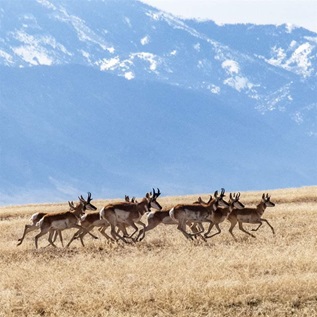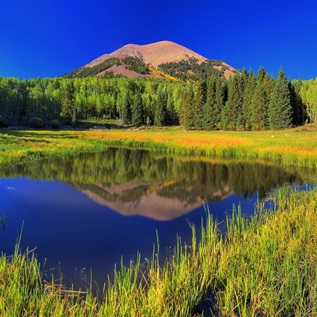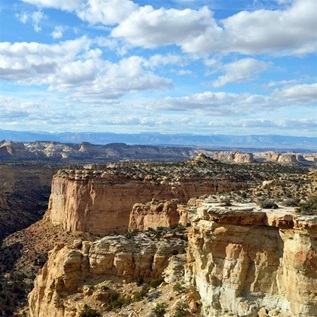Protecting O&C Lands: A Conservation Legacy for Western Oregon
Ancient forests, geologic formations, riots of rare plants. Western Oregon is home to some of the most remarkable natural landscapes that offer fishing and recreation opportunities unparalleled in our nation. Thanks to a mosaic of microclimates that create rain forests, dry pine forests, oak savannas, and alpine grasslands, these lands are some of the most biologically diverse in the United States.
Much of this territory falls under a special class known as O&C lands. In 1866, Congress established a land-grant program for the Oregon & California (O&C) Railroad Co. to spur the completion of the rail line between Portland and San Francisco that required the company to sell the deeded land to settlers. Forty years later, when the company failed to meet the terms of the agreement fully, the federal government reclaimed more than 2 million acres of mostly forested land. Today, those O&C lands remain undeveloped and are administered by the Bureau of Land Management and the U.S. Forest Service.
Numerous wild rivers flow through this landscape, which teems with healthy runs of Chinook and coho salmon as well as steelhead, rainbow, cutthroat, and threatened bull trout. These rivers provide clean drinking water for more than 1.8 million people in dozens of communities, small and large, across western Oregon. Throughout the state, fishing, whitewater rafting, kayaking, hiking, and other recreation contribute more than $12.8 billion annually to the economy and support more than 141,000 jobs. Some of the best opportunities for these outdoor pursuits are on O&C lands.
Though recognized for their ecological and economic value, many of these public lands lack permanent protection. Safeguarding rivers, salmon populations, and ancient forests to ensure clean drinking water and a robust recreation economy is a goal that a vast majority of Oregonians back. Congress has a unique opportunity to preserve these valuable resources and support long-term economic stability for local communities.

This overview briefly details the economic and ecological importance of protecting the O&C lands because of the wildernesses they sustain, the ancient forests they encase, the wild and scenic rivers that run through them, and the key watersheds they harbor. Federal laws can be used to protect some of these areas, but for others, new laws and administrative action will be necessary to ensure their protection for future generations. Those differences are spelled out below, and more detail is available in a series of fact sheets that introduce specific O&C lands in need of protection and ways to achieve these protections.
Plans for protection
WildernessSix large blocks of contiguous O&C land totaling more than 450,000 acres are excellent candidates for federal wilderness protection: Rogue River Canyon, Devil’s Staircase, Mt. Hebo, McKenzie River headwaters, Kalmiopsis backcountry, and North Umpqua River wilderness. These areas cover both O&C and adjacent lands known as inventoried roadless areas—public lands managed by the U.S. Forest Service and under a conservation policy limiting road construction and the resulting environmental impact . Ancient forests and rare flowers, as well as bears, cougars, eagles, wild salmon, and threatened and endangered species make their homes in these places. The checkerboard land ownership patterns makes designating wilderness difficult, but these lands have outstanding wild character and deserve to be safeguarded for future generations and granted special protection by the federal government.
Ancient forests
Preserving the remaining stands of old-growth forests on federal lands in the Northwest has long been recognized as essential to the long-term health of the forests and the plants and animals that depend on them for survival. Congress should extend statutory protection to all stands of old-growth trees currently 120 years of age or older. Protecting these ancient forests on O&C lands would end the debate over old-growth logging and ensure that these invaluable trees continue to play an important role in producing clean water, absorbing carbon, and providing refuge for flora and fauna alike.
Wild and scenic rivers
Western Oregon is probably best known for its many wild rivers that deliver clean drinking water, provide recreation opportunities, and support fishing businesses in communities up and down the coast. Segments of 67 streams in 10 river systems in the O&C landscape are eligible for protection under the Wild and Scenic Rivers Act, a federal law established to protect special rivers from degradation. This designation would safeguard hundreds of miles of waterways from damaging mining, logging, dam-building, overgrazing, and other harmful development, thereby allowing for the continued robust growth of the river economy.
Collaborative Watershed Conservation Areas
The O&C lands house important clean drinking water sources and wild salmon habitat. A new “Watershed Conservation Area” designation should be crafted to protect high-priority watersheds and facilitate collaborative management among federal, state, and private entities in key drinking-water source areas, salmon strongholds, and other watersheds with extraordinary conservation values. Primary management goals for these systems would be the restoration and maintenance of ecological processes and functions beneficial to water quality and quantity, and the creation and maintenance of habitat for native fish and wildlife. At least six systems have been identified for this designation: North Santiam, McKenzie, Umpqua, Rogue/Illinois, Nestucca, and Sandy/Clackamas.
Northwest Forest Plan core environmental provisions
The Northwest Forest Plan, which the Clinton administration instituted in the 1990s to address the debate over old-growth forests in the Pacific Northwest, is now the governing blueprint for management of western Oregon and Washington forests. This plan includes several provisions that have proven to be both ecologically and economically advantageous, and two of those provisions—the Aquatic Conservation Strategy and Key Watersheds—deserve federal statutory protection. The standards of the Aquatic Conservation Strategy, which protects rivers and streams in the Northwest, should apply to all waterways on the O&C lands, and the Key Watershed designation, identified as essential for providing habitat to terrestrial and aquatic species, should also be legislatively protected to ensure the continued safety of drinking water sources and at-risk fish populations. Finally, a third provision of the plan, the concept of providing for large blocks of contiguous habitat, as laid out by the Late-Successional Reserve network, should also be maintained.
Western Oregon Conservation Network
The O&C lands include more than 80,000 acres identified by the Bureau of Land Management and citizens as “Areas of Critical Environmental Concern”—habitats, resources, or landscapes in need of special management. These ecologically important locations, found in approximately 133 places, are scattered throughout western Oregon. They range in size from the 1,700-acre Bobby Creek Research Natural Area, with its rare plants and endangered stands of Port Orford cedar, to a 10-acre tract of land that is home to the northernmost grove of rare Baker cypress. Congress should create a new designation, the Western Oregon Conservation Network, to connect and permanently protect these unique areas as a system of outstanding lands in western Oregon.
What are the O&C Lands
In 1866, Congress established a land-grant program for the Oregon & California (O&C) Railroad Co. to spur the completion of the rail line between Portland and San Francisco that required the company to sell the deeded land to settlers. Forty years later, when the company failed to meet the terms of the agreement fully, the federal government reclaimed more than 2 million acres of mostly forested land. Today, those O&C lands remain undeveloped and are administered by the Bureau of Land Management and the U.S. Forest Service.
Resource File: Protecting O&C Lands: A Conservation Legacy for Western Oregon (PDF)











